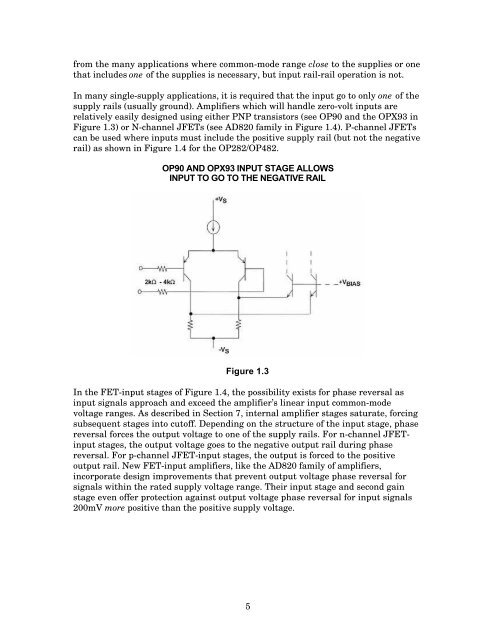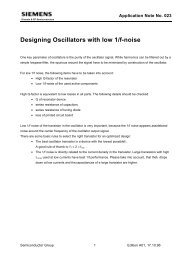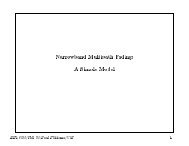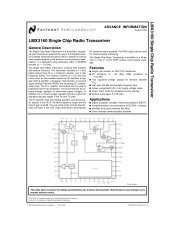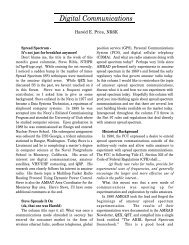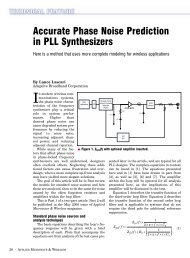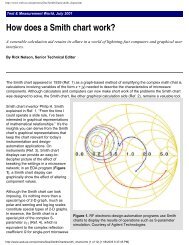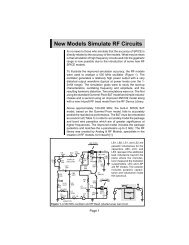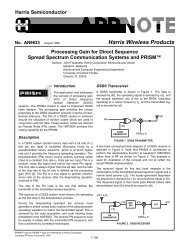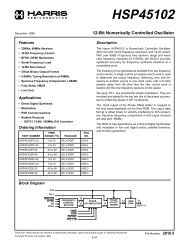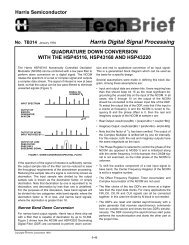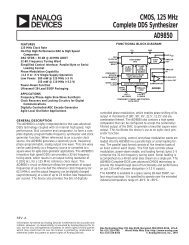SECTION 1 SINGLE-SUPPLY AMPLIFIERS - Analog Devices
SECTION 1 SINGLE-SUPPLY AMPLIFIERS - Analog Devices
SECTION 1 SINGLE-SUPPLY AMPLIFIERS - Analog Devices
- No tags were found...
You also want an ePaper? Increase the reach of your titles
YUMPU automatically turns print PDFs into web optimized ePapers that Google loves.
from the many applications where common-mode range close to the supplies or onethat includes one of the supplies is necessary, but input rail-rail operation is not.In many single-supply applications, it is required that the input go to only one of thesupply rails (usually ground). Amplifiers which will handle zero-volt inputs arerelatively easily designed using either PNP transistors (see OP90 and the OPX93 inFigure 1.3) or N-channel JFETs (see AD820 family in Figure 1.4). P-channel JFETscan be used where inputs must include the positive supply rail (but not the negativerail) as shown in Figure 1.4 for the OP282/OP482.OP90 AND OPX93 INPUT STAGE ALLOWSINPUT TO GO TO THE NEGATIVE RAILFigure 1.3In the FET-input stages of Figure 1.4, the possibility exists for phase reversal asinput signals approach and exceed the amplifier’s linear input common-modevoltage ranges. As described in Section 7, internal amplifier stages saturate, forcingsubsequent stages into cutoff. Depending on the structure of the input stage, phasereversal forces the output voltage to one of the supply rails. For n-channel JFETinputstages, the output voltage goes to the negative output rail during phasereversal. For p-channel JFET-input stages, the output is forced to the positiveoutput rail. New FET-input amplifiers, like the AD820 family of amplifiers,incorporate design improvements that prevent output voltage phase reversal forsignals within the rated supply voltage range. Their input stage and second gainstage even offer protection against output voltage phase reversal for input signals200mV more positive than the positive supply voltage.5


